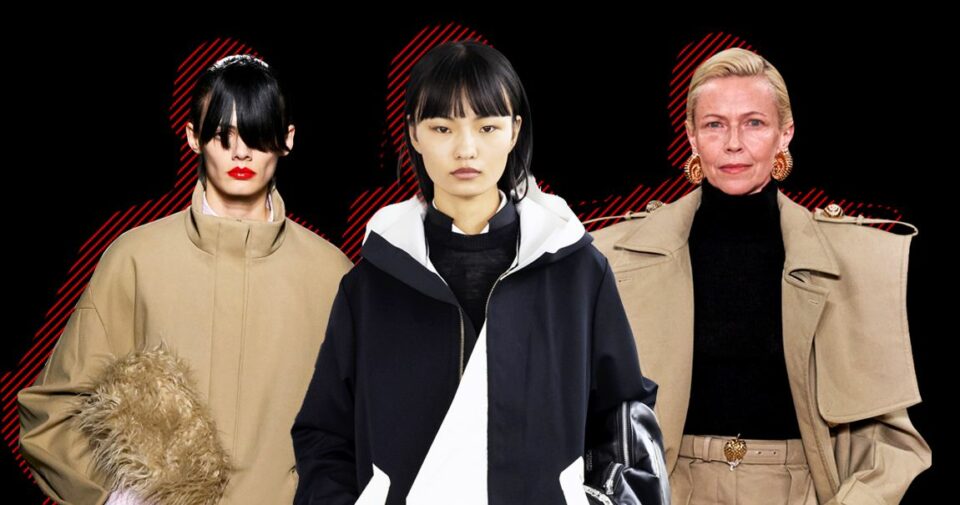In the opening minutes of Undercover on Wednesday, a shoeless woman in jeans and a drab white camisole walked slowly across the concrete floor, one hand listlessly holding a tan sweater at her side as though she was so lost in her thoughts, or upset, that she forgot to put on her shoes. She was followed by another barefoot woman whose pinstriped gray trousers and light brown tank top with a long, loose panel in the back at least made her look pulled together, even professional.
For the designer Jun Takahashi, the two women, and the rest of the cast, were all facets of the same person: a 40-year-old single mother with a young son and a job in a law firm, residing somewhere in the world. Not only did Takahashi attempt to reflect upon such a life in his collection but he also asked his friend the director Wim Wenders to write a kind of meditation, called “Watching a Working Woman,” which Wenders read in a recording as the models walked.
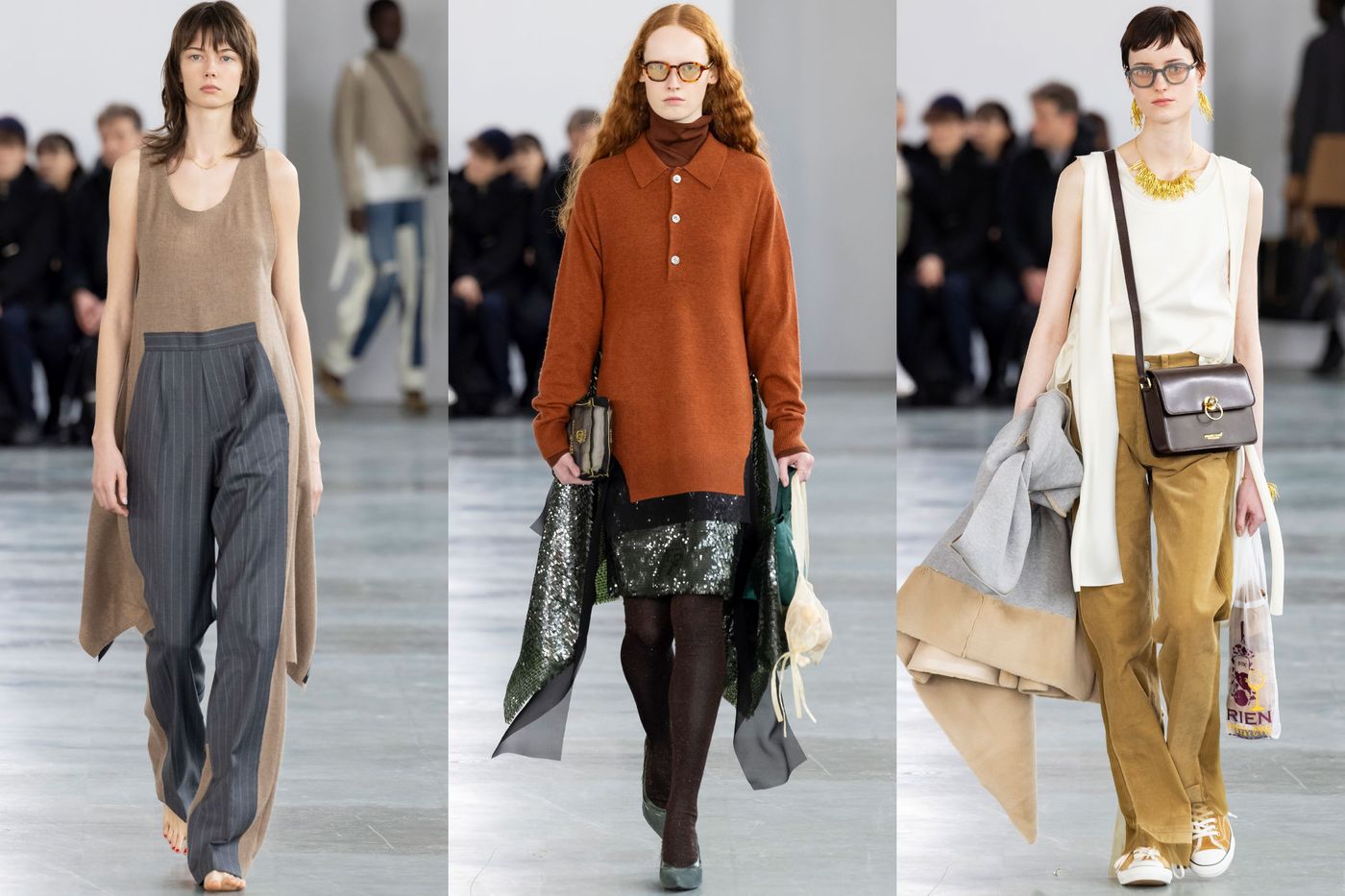
Of late, many creative directors of luxury brands talk about cutting back on elaborate design and craft techniques to produce more realistic, “everyday” fashion. But the industry, as usual, wants it both ways. Few big brands are cutting back prices, which are now beyond the reach of the middle class—the group that powered designer ready-to-wear from the 1960s onwards. And European luxury brands have entered a revenue race to see which can top $1 billion, then $5 billion, and so on. The chief executive of a distinguished, $300-million-a-year French house told me that, at this rate, fashion will follow the airplane industry, with “only a Boeing and an Airbus left.”
A related topic of discussion at the shows is the dearth of designers, of either sex, who truly love women — their bodies, their guises, their roles, their seriousness — and consistently convey that feeling in their clothes. Several spring to mind: Miuccia Prada and Raf Simons of Prada, Nadège Vanhee-Cybulski of Hermès, Hillary Taymour of funky Collina Strada, Phoebe Philo, Olivier Rousteing of Balmain. Yet, at the same time, no one can go back to Azzedine Alaïa’s hospitable kitchen. That is, to the decades when it was a given that designers had deep regard for women. And though films, novels and television often depict the life of an ordinary woman, I can’t remember when a designer last considered her.
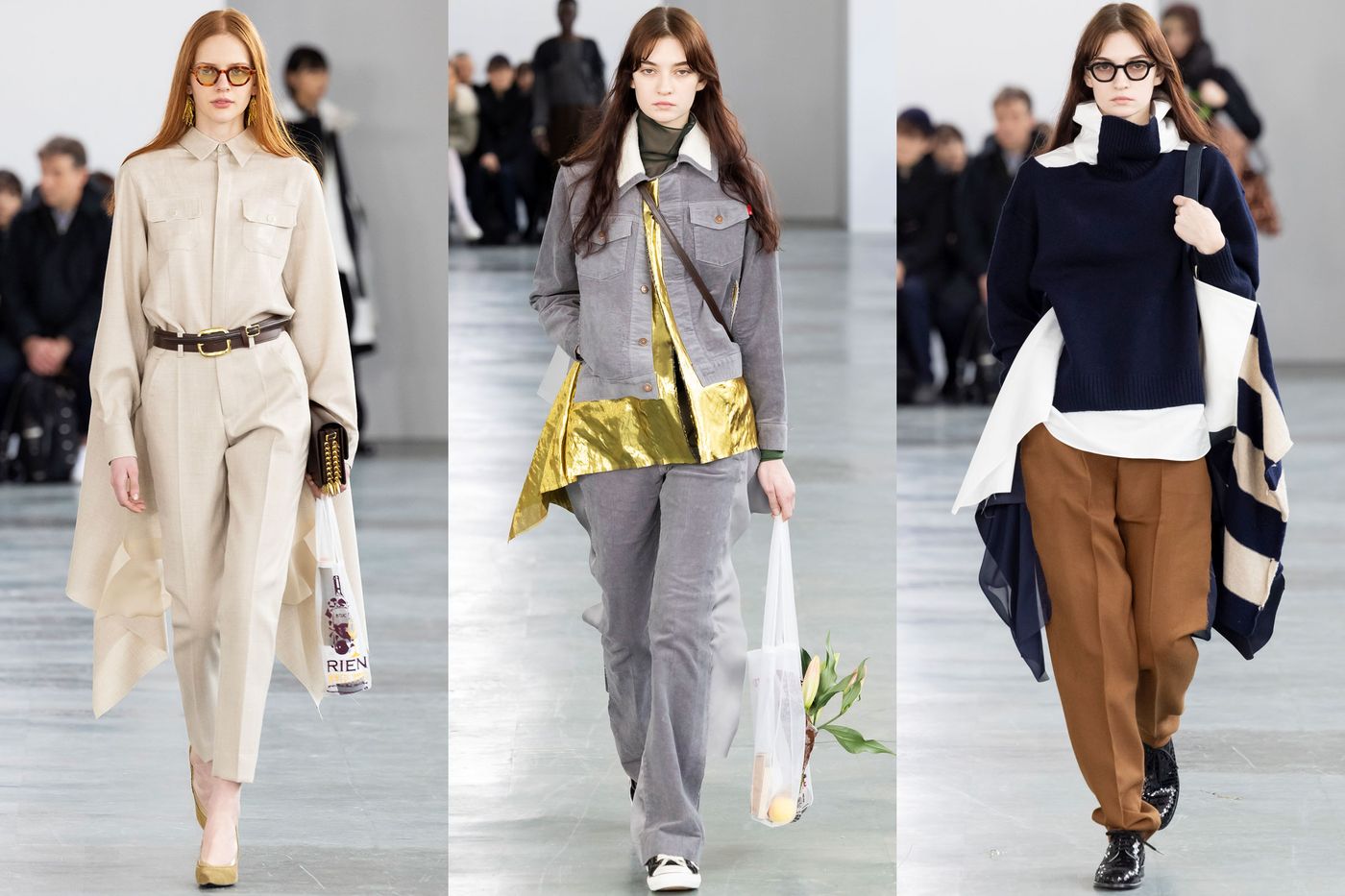
So Takahashi’s concept was all the more original and moving for this long overdue attention.
To get the measure of the clothes, and how they depended to an extent on Wender’s script and mellow tone, you needed to experience the show. Photos don’t adequately convey either the subtlety of the designs or the pacing of the outfits, whose attitude was amazingly linked up with Wender’s content. His script essentially sketched a typical day for the woman. And it began with the recurring beat of “as always”:
“As always,
she wakes up just before the alarm goes off.
As always,
she looks at the clock and smiles,
but turns it off before it would start ringing.
She doesn’t want her child to wake up.
Not yet.
As always,
she gets up in the dark
and walks into the bathroom.
As always,
she closes the door first
before she turns on the light.
As always,
she quickly looks into the mirror.
Yes, that’s her.
40 years old, mother of one,
single, working.
Would others see a difference from last week,
last month, last year?
To herself, she’s always the same,
sometimes more tired, that’s all.”
It soon became clear that many of the clothing items were actually a single garment. The opening jeans and camisole were a jumpsuit, with a splice of the same tan sweater yarn in the side of a pant leg. Coats and jackets had seamless squares of fabric on the interior that fell below the hem and fluttered as the models walked. A gray denim jacket had a band of crinkly gold fabric affixed to it, while a tan crewneck seemed to have a portion of a white shirt trailing from its back, like Peter Pan’s shadow.
As the models walked purposefully — some wearing glasses or carrying yoga mats that blended with their totes — you often couldn’t make out the distinct form of a garment. Because it blurred with something else. Takahashi said the blurring was mainly achieved by bonding one fabric onto another. To me, the results — the stray bits that stuck out, the raw edges, the mix of hard and soft materials — evoked the fragments of this woman’s life and her effort to hold things together while fully accepting that they would come apart.
“I really focused on daily life, in an Undercover way,” Takahashi said afterward. “The ups and downs of daily life.” He added that he had been inspired by Wender’s latest movie, Perfect Days, about a Tokyo toilet cleaner, but also thinking about his own life as he ages. For him, those soft and shiny fabrics that stuck out from the clothes, that couldn’t be contained, were elements of the extraordinary within the ordinary.
The Paris shows have a wonderful way of turning the page in a single day. On Tuesday evening, we were looking at Anthony Vaccarello’s hyper X-rays in monotonous chiffon for Saint Laurent. (I’d forgotten the irony that Tom Wolfe coined the term “social x-rays,” partly because of Nan Kempner, a longtime Yves Saint Laurent client.). By Wednesday, thanks to Undercover, Dries Van Noten and Balmain, the story had shifted. The feelings stoked were more complex, sincere and tender.
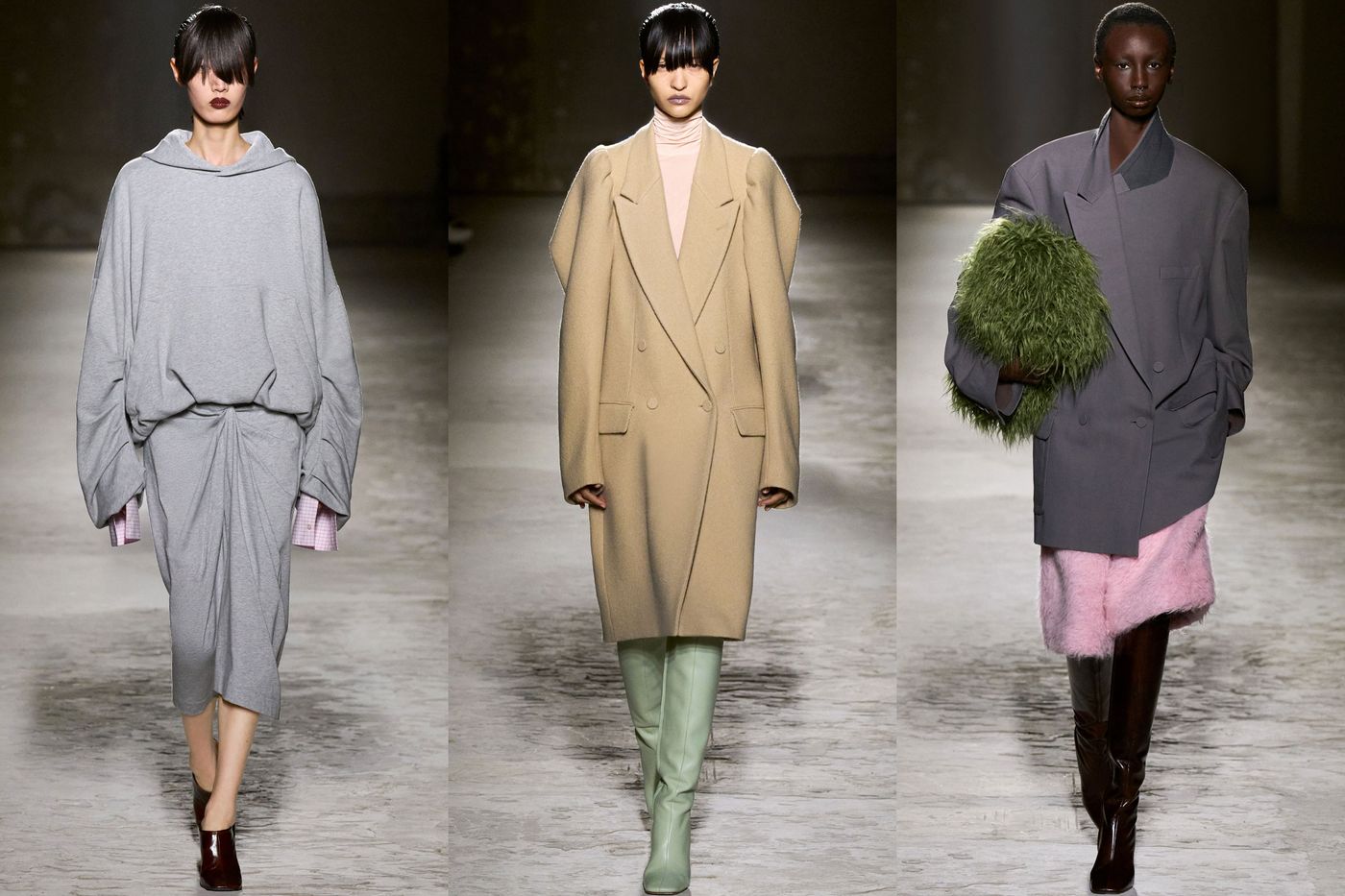
Van Noten called his collection “The Woman Who Dares to Cut Her Own Fringe.” Doesn’t everyone cut their own bangs? Because his show happened right after Undercover, some of the hectic flavor of the styling seemed aligned. A hoodie was transformed into a cool, draped dress in gray cotton jersey. Otherwise strict wool coats came slightly puffed, vaguely Victorian sleeves. As usual, the collection was chock full of separates for layering, semi-sheer T-shirts and bright, draped silk stoles that seemed sliced from a vintage party frock and now worn over a sheer double T-shirt and royal blue trousers. For all its freewheeling quality, though, the collection needed more of Van Noten’s decisive judgment. We already know what a democracy of tastes looks like.
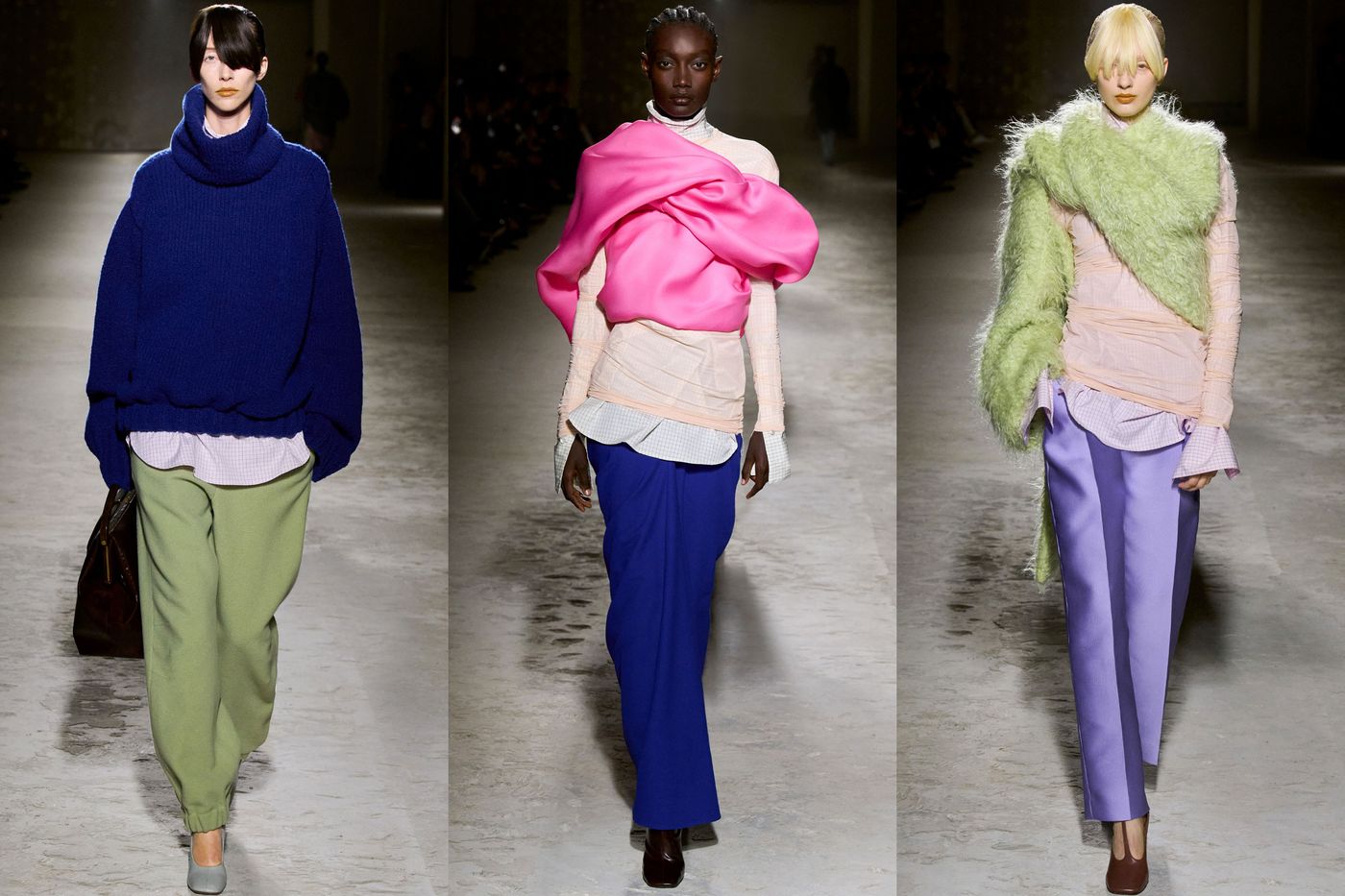
The great thing about Rousteing’s work for Balmain, especially in the last three seasons, is that he knows what he wants. There’s no tentativeness from him, and no fear, even if the results may strike some as outlandish. It’s his creative and sartorial position that I admire. And of course his Balmain looks like no other fashion label in the world.

His fall collection was plainly an ode to Bordeaux, the city of his adoptive parents and where he grew up, and also the capital of the famous wine region. Hence the campy riff on grapes — as bunches of gold grapes for earrings, as embroidery. Rousteing also featured another French delicacy: snails, blown up as outsized gold lapel clips on a suit jacket and as belt buckles.
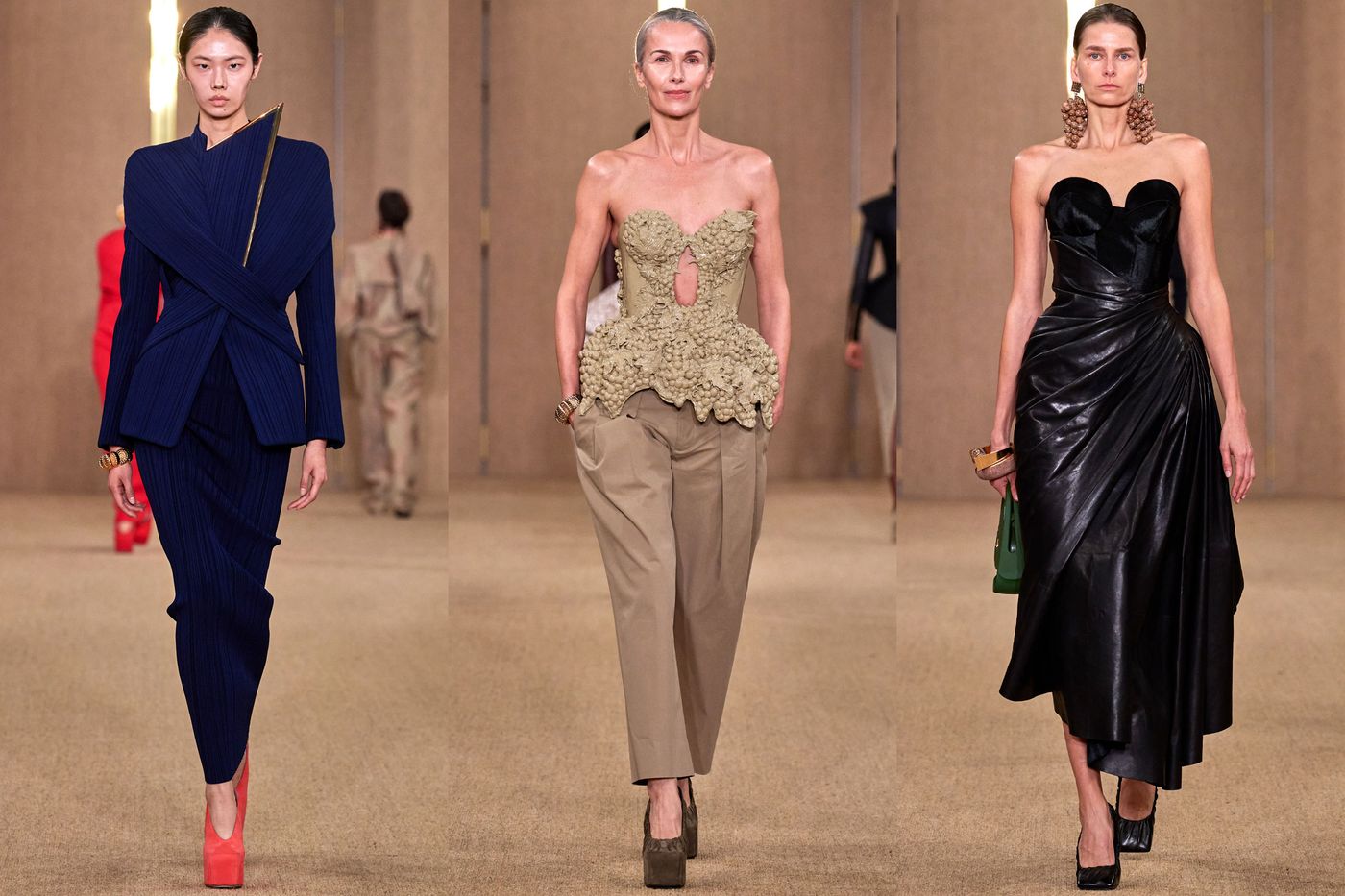
Tailoring served as the main motor of the collection, from the exuberant spy trench coats in khaki and black leather that opened the show to a snug and perfectly cut black leather jacket with a gathered, asymmetrical skirt in cotton khaki. Rousteing can play up the almost farcical drama of a classic Balmain side-draped skirt, but he knows what he’s doing. It’s the balance of the whole collection that makes it work, and the earnestness of his sympathies—for beauty, tradition, daring.
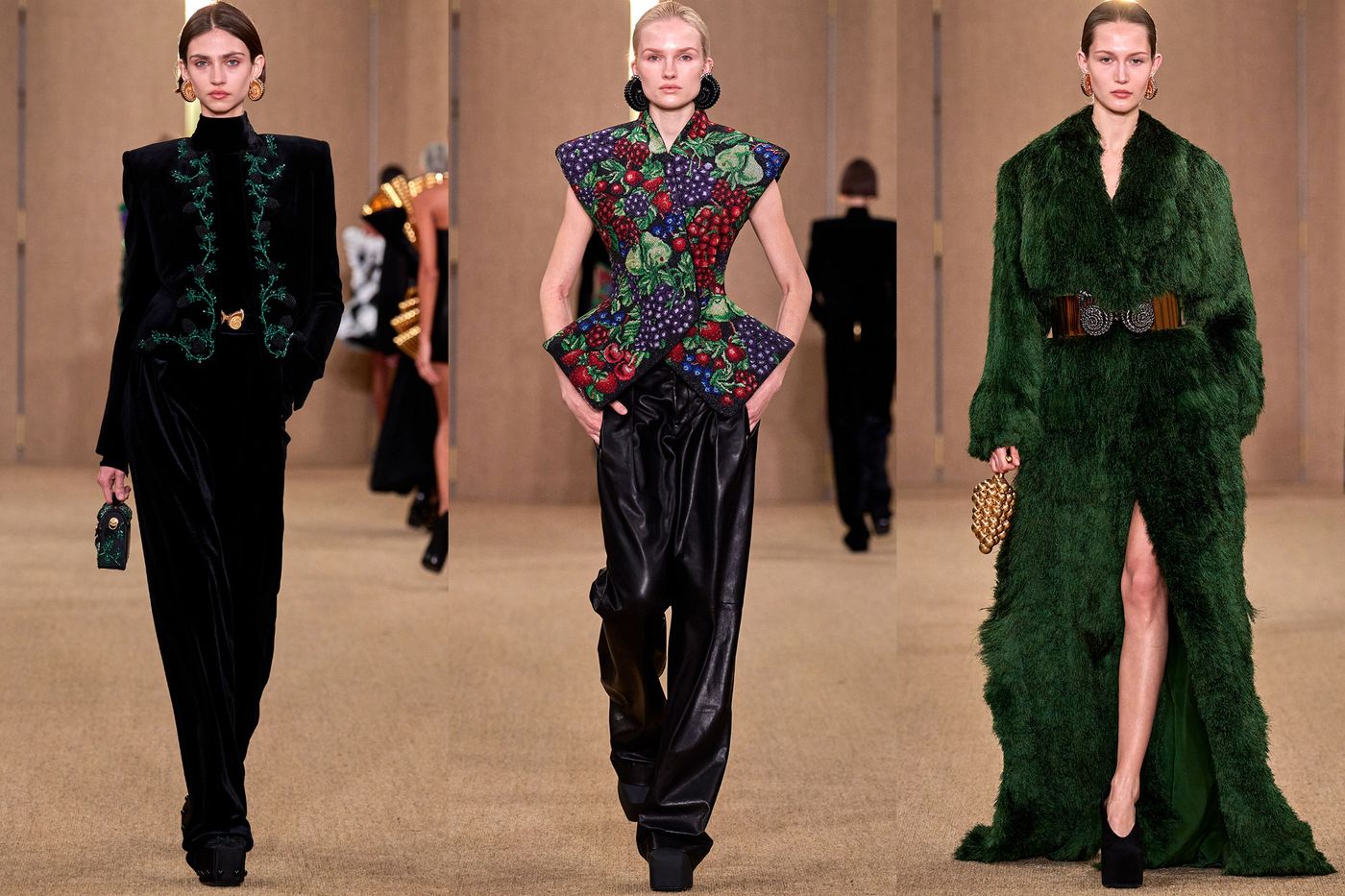
He had a terrific cast of models, including many older women who weren’t the usual modeling legends. That, too, was refreshing, and they help promote a much wider view of glamour and fashion. As he said backstage, “The casting was probably the most incredible of my career. Women are beautiful.”
Cathy Horyn , 2024-02-29 21:07:50
Source link
